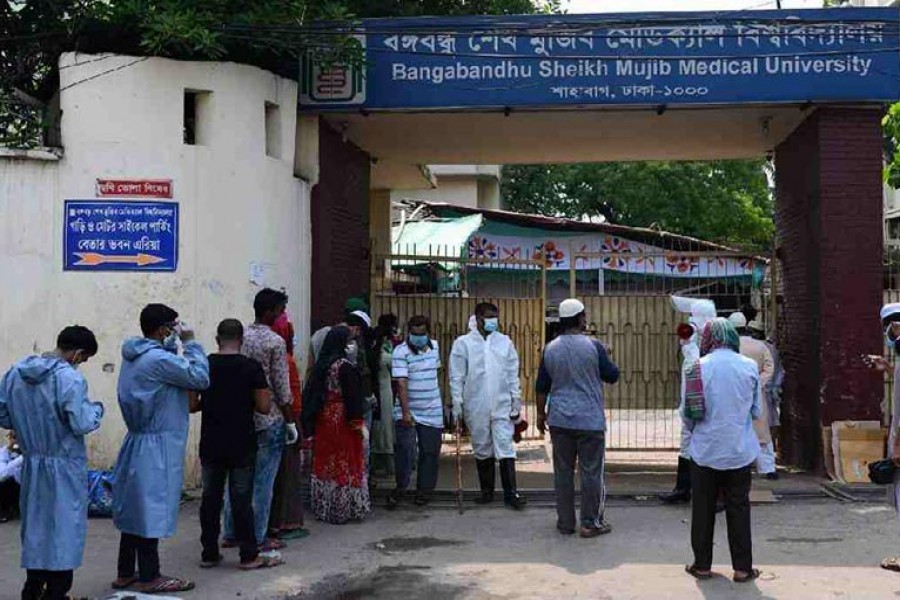The burden of out-of-pocket expenditure per capita, as a share of current health expenditure, for Bangladesh, is very high. It is, in fact, one of the highest in the world, 72.7 per cent, according to the World Bank estimate for 2019.
Between 2008 and 2010, it was 67.2 per cent. The share has been rising with no interruption since then. Though no estimate is available for 2020 and 2021, it is assumed that the ratio has gone further up with the deadly coronavirus wreaking havoc on life and living.
The out-of-pocket health expenditure is an average estimate, as it is done with per capita income. Such estimates hide many ground realities, the ever-widening income inequality included.
The truth is, scores of people, including the ones living in remote areas, have to bear 100 per cent of their health expenditures. The prevailing situation, however, forces the poor and marginal people to skip medical treatment since they can hardly afford it.
But these people are supposed to get the minimum medicare free of cost at the community clinics. The state-sponsored television advertisements and statements coming from the health ministry honchos strengthen such an expectation.
The ground realities are, however, different. A large number, if not most, have been failing to provide healthcare to the rural poor, as there exists a great mismatch between the official claim and the actual services the community clinics offer.
These clinics at the Upazila level are supposed to offer minimum and primary medicare to the rural population. In most cases, the health workers employed in those are not adequately geared to their duties and responsibilities. Nor do the clinics get a supply of medicines and other minimum medical essentials, even to meet the requirement of one-fifth of the visitors.
Many rural poor have stopped visiting these clinics for the failities' inability to meet the minimum basic requirements. These people are forced to skip treatment or move to nearby cities and towns to get medical help, which is, obviously, expensive.
A few community clinics have been providing useful services to sick people. The quality of service is largely dependent on the attitude of the people manning these clinics. But non-availability of qualified medical and other staff and medicine supply very often undermines their good intentions. It is hard to say the local people's representatives and Upazila health complex officials are overseeing the activities of the community clinics and working on the improvement of their services.
Bangladesh has one of the finest health infrastructures as part of the government's desire to ensure minimum healthcare for the rural people. But the facilities, both in urban and rural areas, have been underperforming because of several shortcomings. The problems are more acute in the case of the field-level health infrastructure. Volumes have been said and written, but the situation has not improved to any notable extent. The government's priority task should be to raise allocations for health and ensure their effective and equitable use.
When we talk about an ever-increasing per-capita income in line with the country's journey towards the club of the affluent, we need to bring down the per capita out-of-pocket health expenditure to do justice to our longing for balanced development.


